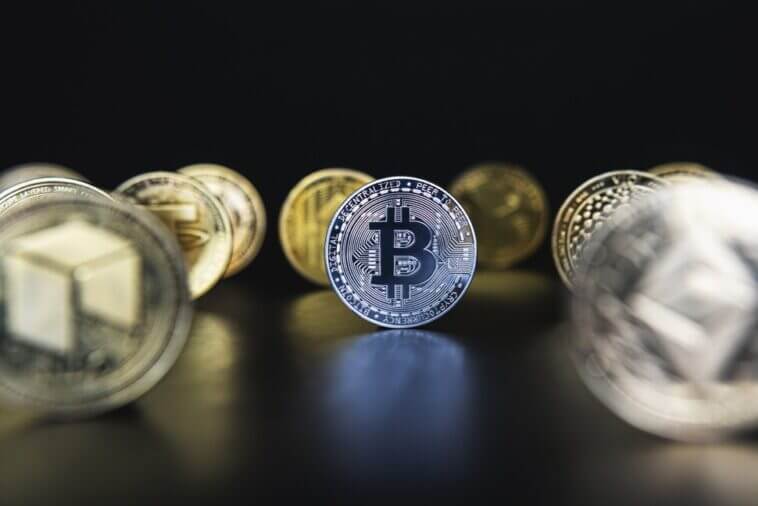From humble beginnings in 2008 to its 2021 price peak, Bitcoin (BTC) has taken investors and the world for quite a ride. In just over a decade, the first cryptocurrency has spiked and crashed and rallied and fallen again, over and over, on the way to a price in the tens of thousands.
Bitcoin is a decentralized peer-to-peer electronic exchange. Breaking it down, this means people can send money directly to one another without a bank or third party as an intermediary. Bitcoin was created so people don’t have to rely on the government or financial institutions to make financial transactions. Bitcoin allows users to transact amongst themselves using the Bitcoin blockchain, which relies on a proof-of-work method for tracking and verification of transactions.
Today, Bitcoin is the world’s most popular cryptocurrency, and some advocates believe that it could one day replace physical cash. While Bitcoin is not perfect, investors are optimistic about the developments made since the crypto’s inception. Bitcoin growth has rallied a fervent community that is excited about cryptocurrency’s rise and the opportunities it will present for investors and businesses. Bitcoin has also inspired the development of thousands of other cryptocurrencies. Here’s how Bitcoin did it and where it is heading:
When Did Bitcoin Start?
Bitcoin was created out of the turmoil of the 2008 Great Recession as distrust of banks and their role in the financial system grew. An individual or a group of people going by the name Satoshi Nakamoto issued a white paper to address the centralized control of money and the trust required in handling citizens’ cash.
In the traditional financial system, transactions can be reversed or meddled by third parties, and transaction costs can add up. Bitcoin was presented as a way to transact without using a third party. Rather, the Bitcoin system uses cryptographic proof to maintain the integrity of the network instead of relying on third-party banks and other institutions.
On Jan. 3, 2009, the blockchain was launched when the first block, called the genesis block, was mined. The first test transaction took place about one week later.
“For the first few months of its existence, it was obtainable only by miners validating the Bitcoin blockchain,” says Chetan Chawla, assistant professor of entrepreneurship at North Central College in Naperville, Illinois, who researches cryptocurrencies and blockchain.
At this point, Bitcoin had no real monetary value, says Mark Grabowski, an associate professor at Adelphi University who teaches a course on Bitcoin and is the author of “Cryptocurrencies: A Primer on Digital Money.” Miners – who use powerful computers that solve complex math problems to uncover new Bitcoins and verify that previous Bitcoin transactions are legitimate and accurate – would trade Bitcoin back and forth just for fun.
It would take more than a year for the first economic transaction to occur, when a Florida man negotiated to have two Papa John’s pizzas, valued at $25, delivered for 10,000 BTC on May 22, 2010. “That transaction essentially established the initial real-world price or value of Bitcoin at 4 Bitcoins per penny,” Grabowski says.
Fast forward to today, and that amount of Bitcoin has a value of nearly $400 million. In honor of this pivotal moment, cryptocurrency fans and supporters call May 22 Pizza Day.
“In the early days, the first transactions with Bitcoin were negotiated on internet forums with people bartering for goods and services in exchange for Bitcoin,” says Garrette Furo, partner at Wilshire Phoenix, a New York-based investment management firm. “The value of Bitcoin was originally arbitrary.”
Then, in 2011, miners and coders started to build other networks, like Ethereum and Litecoin, and began to improve the code behind Bitcoin’s blockchain, adapting it for different uses, Furo says.
“This wider base of applications brought in more individuals, which contributed partly to the increase in Bitcoin’s perceived value,” he says. “There was also an increase in the use of Bitcoin as currency once select businesses began to accept the asset alongside traditional currency.”
Once Bitcoin became available on exchanges in 2010, it became easier to buy, sell, trade, and store. Thanks to these exchanges, Bitcoin has a reliable price against the U.S. dollar. It even has been officially adopted as legal tender in El Salvador alongside the dollar.
Bitcoin Price History
One of the characteristics that Bitcoin is known for is its volatility. As an emerging asset class, Bitcoin carries with it much speculation, with the basis for its value widely debated. Despite the price fluctuations, Bitcoin’s price has exploded since it came to market in 2009.
“Bitcoin’s history is largely one of astronomical growth punctuated by a few severe price retrenchments,” says Peter C. Earle, economist, and research fellow at the American Institute for Economic Research.
In February 2011, Bitcoin’s price crossed the $1 threshold. “For its first few years as it grew, its price was under $2,” says Kris Marszalek, CEO of Crypto.com. “In June 2011, it hit its first bubble, rocketing to around $31 before sinking back down to the single-digit range.”
Almost two years later, in April 2013, Bitcoin reached $200. By the end of November of the same year, it was worth more than $1,000. It then rose to $10,000 in November 2017 and all the way up to its maximum price near $68,990 in November 2021. That’s not to say it was a smooth ride.
In 2017, Bitcoin was thought to be in a bubble, with investors paying a premium to own Bitcoin. The 2017-2018 bubble was primarily led by a boom in initial coin offerings, or ICOs, Furo says. Some market veterans compare the Bitcoin bubble to the internet boom at the end of the 20th century.
“Everyone from your next-door neighbor to the wealthiest hedge fund managers was talking about Bitcoin or some altcoin, new network or protocol,” Furo says. “The ICO craze brought in billions of dollars into the crypto space. Investors saw the value of coins fall dramatically in the early months of 2018 as prices crashed amid uncertainty, fraud and a lack of belief, among other psychological and technical factors.”
After the fall of Bitcoin’s value, what you could call a “more mature market” arose around cryptocurrency. “Fidelity entered the custodian space, (and) national banks were given permission to custody digital assets,” Furo says.
“Because of these developments, the market for Bitcoin has become relatively mature,” he says. “Smart and efficient exchanges exist, and core institutional-grade players are adopting the necessary measures to create a sustainable and viable market for the trading and investing of Bitcoin and other cryptocurrencies.”
Bitcoin Today
Today, one Bitcoin is worth about $37,000. It’s a long way from its all-time high but also a long way from its post-peak bottom in 2018 of just over $3,000.
The identity of the creator of Bitcoin remains a mystery. “To this day, no one knows who Satoshi Nakamoto is or was,” Earle says. “It’s a subject not only for debate but speculation and – perhaps inevitably – conspiracy theories.”
Earle says these theories abound, including Bitcoin being a “skunk work,” or a secret project of a large entity like Alphabet Inc. (GOOG, GOOGL) or an intelligence agency. “Others believe that it’s a ‘trap-door project,’ which, when it gets big enough, a malevolent party which has been lying patiently in wait for over a decade will suddenly seize control of.”
To Earle, more important than Bitcoin’s history is its “testimony to two long-disputed views: First, that money is good like any other, (and) second, that money can come about as a result of a market process.”





